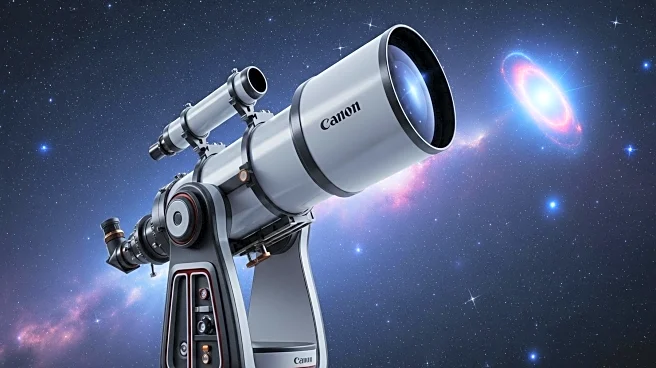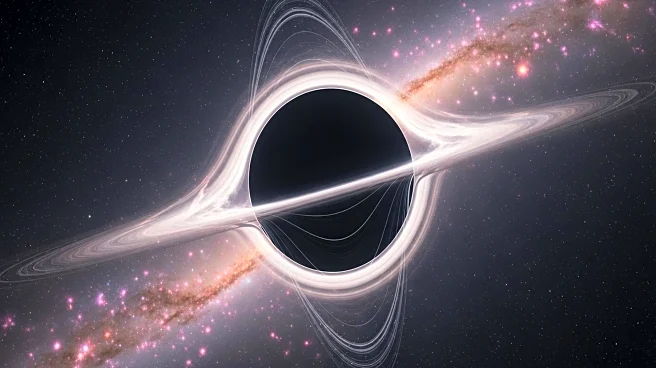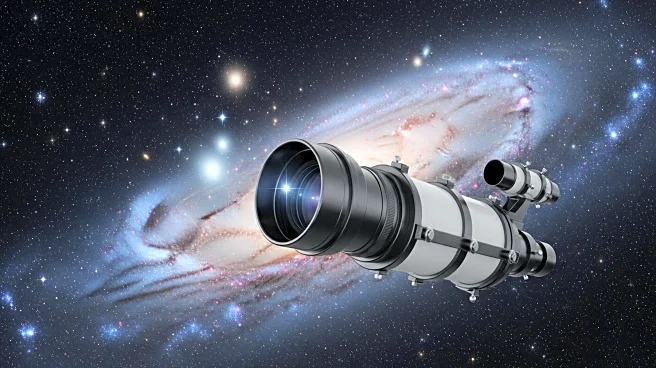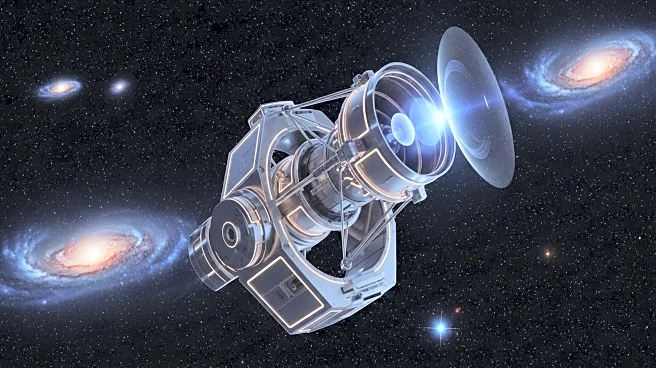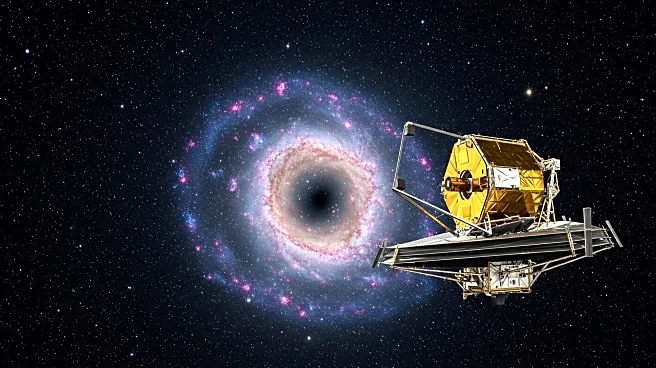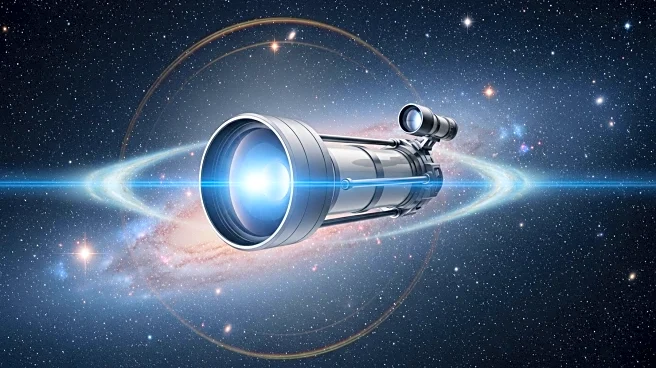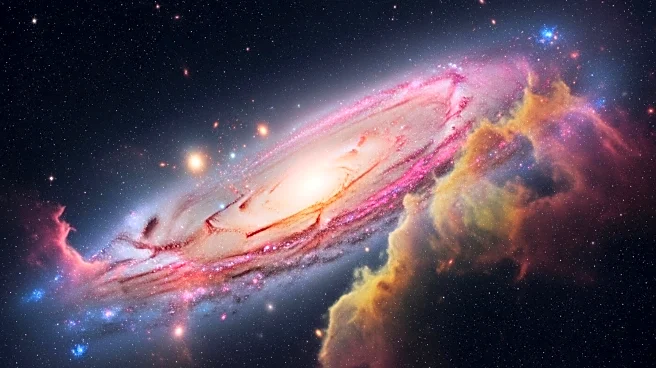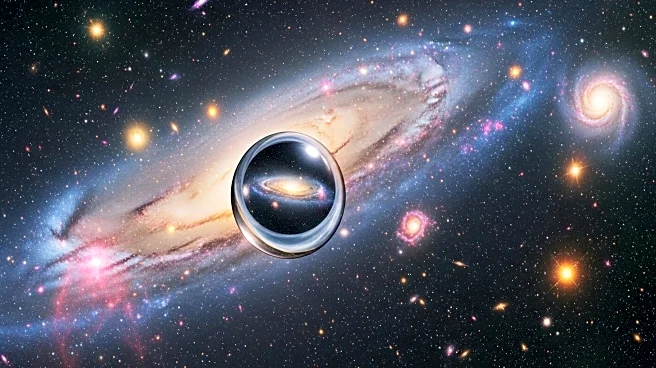What's Happening?
NASA's James Webb Space Telescope may have identified the universe's first 'dark stars,' according to a paper published in the Proceedings of the National Academy of Sciences. These primordial bodies, composed mainly of hydrogen and helium, are theorized to be powered by dark matter, leading to their eventual self-destruction. The existence of supermassive dark stars could explain the presence of bright and unexpectedly common galaxies in the universe's distant reaches. The study suggests that these stars, supported against gravitational collapse by self-annihilating dark matter, could have formed a few hundred million years after the Big Bang, contributing to the formation of supermassive black holes and distant quasars.
Why It's Important?
The potential discovery of dark stars offers a new perspective on the role of dark matter in the early universe. Understanding these stars could provide insights into the formation of galaxies and black holes, addressing longstanding questions in cosmology. The findings may also advance the study of dark matter, a substance that constitutes a significant portion of the universe but remains largely undetected. This research could lead to breakthroughs in understanding the universe's structure and the processes that shaped its evolution.
What's Next?
Further research is needed to confirm the existence of supermassive dark stars and their role in the universe's early development. Scientists will continue analyzing data from the James Webb Space Telescope to identify more dark star candidates and study their characteristics. This ongoing research may refine theories about dark matter and its interactions, potentially influencing future astronomical studies and technologies designed to explore the universe's origins.
Beyond the Headlines
The study of dark stars challenges existing paradigms about star formation and the universe's early history. It highlights the complexity of cosmic evolution and the potential for unknown phenomena to shape the universe. This research underscores the importance of innovative technologies like the James Webb Space Telescope in expanding our understanding of the cosmos and exploring the fundamental forces that govern it.



